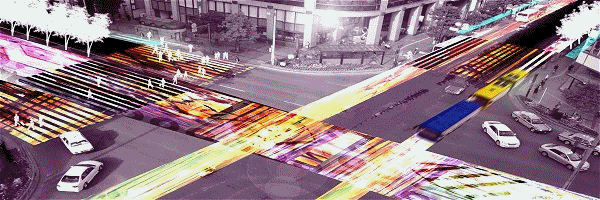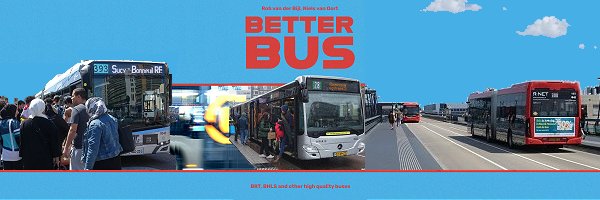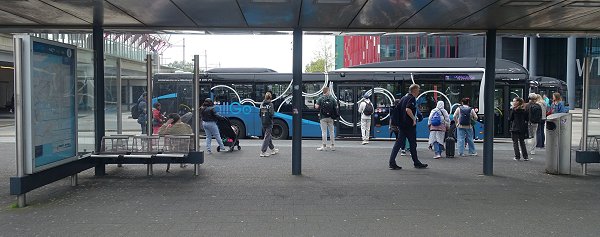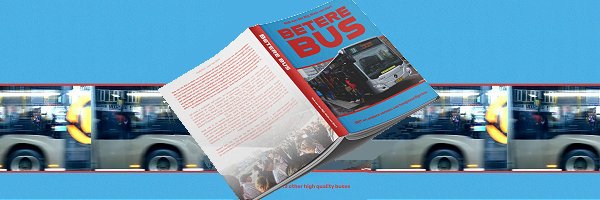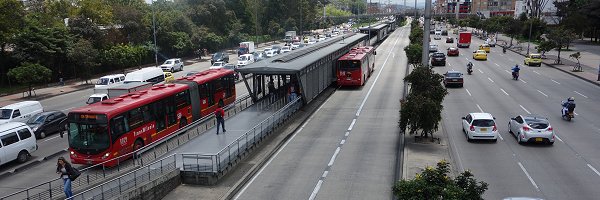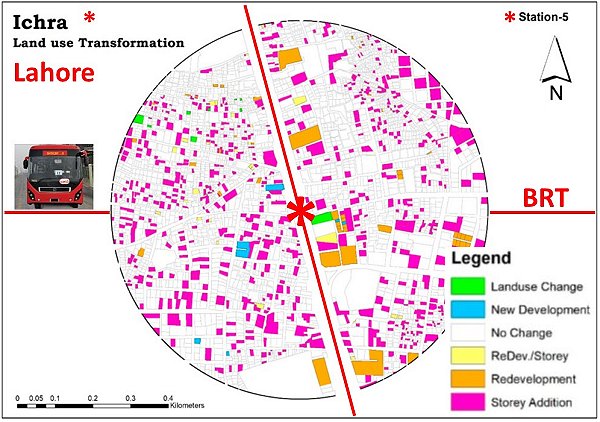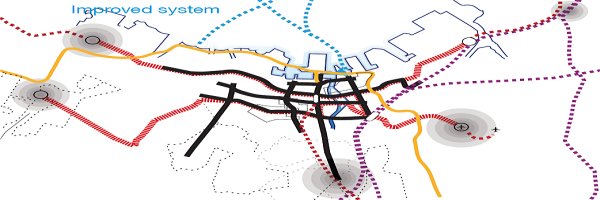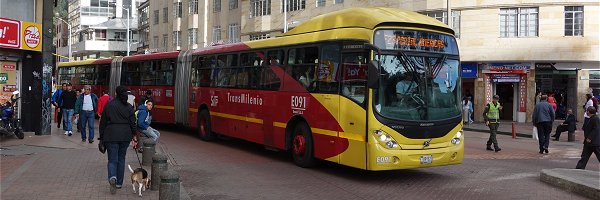Better
Bus Our societies deserve better public transport solutions |
||
| RVDB Urban Planning___Lightrail.nl____Favas.net____Projects____Contact | ||
Better Bus (i.e. enhanced bus) comes in different shapes. In our consultancy and research practice, we have conceptualized these shapes into a bus typology that offers BRT ('Bus Rapid Transit', e.g. TransMilenio in Bogotá, Colombia) and BHLS ('Bus with High Level of Service', e.g. Tzen4 in Greater Paris, France) a central position. In short: BRT and BHLS represent bus systems with metro and tram characteristics respectively. There is no conventional 'standard' for better bus, because technical specifications, local use, specific requirements and considered performance can vary. Only a clear view on the entire bus spectrum and intended bus shapes allow decision makers developing sound and sustainable transport policies. That applies to BRT and BHLS, but also to the conventional bus in many cites, the improved bus (such as Chronobus in Nantes, France), the high quality long-distance bus (for instance in Spain) and last but not least to the small bus as big taxi, bespoke line-based service, or community owned transport.
Bus projects and operations inevitably affect their environment in several respects. Within the city, the urban region, or rural area better bus links to spatial, social, economic, legal issues and other contextual matters. Particularly bus schemes for new infrastructure and new ways of spatial-functional integration are complicated. That’s why it’s common to phase such bus projects. Unlike rail-based public transport, the enhanced bus doesn’t necessarily need all the infrastructure from the outset to be able to start operating. This makes it possible to (strongly) phase, that is, to divide the project into 'feasible' parts. Naturally, this places a heavy burden on the 'management' of the future.
Our
Better Bus
principle
activities:
Our work on mobility and space and in particular on public transport has recently led to the publication of our book 'Better Bus' featuring all shapes of enhanced bus - unfortunately only in Dutch for the time being ('Betere Bus’). In the near future we will provide English-language publications based on this book. If you can't wait for that, please order the Dutch book at Acquire Publishers.
In our (ongoing) research into BRT systems (in co-operation with University of Technology Delft, Netherlands, and Ghent University, Belgium) we underlined the effectiveness of better bus systems, though, with some footnotes. For instance, one our cases like Bogotá (Colombia) shows that the amount of BRT vehicles needed is much higher than the number of light rail vehicles in a similar situation. This means that the number of staff needed (above all drivers) is much higher in the LRT case, which is only financially achievable in low-wage countries. Other ‘costs’ are significant loss of comfort, overcrowding, social unsafety, irregular service patterns, unreliability of services, and ultimately saturation of the system.
Our case study on the BRT system of Lahore (Pakistan) and its effects on urban density, economy and land use. A selection of stations is assessed, like Ichra. The paper on this subject has been published, e.g. here ... Our pilot project research for the Japanese city of Fukuoka (2011-2013) offered a new consistent principle to serve as guideline in the redesign of the bus network: On the busiest sections, multiple lines should be bundled into a single trunk line. The trunk line should then be complemented by a series of feeders services, connected to trunk line service by advanced interchange facilities that allow for easy cross-platform transfers. This improved and extended network must be used to stimulate all future urban (re)development and as a framework for transit-oriented (re)development at a limited number of urban nodes within the network. Download the full presentation (Fukuoka, 2012)…
Our
first generation of case studies were published on this
site during 2006 - in
co-operation with Axel Kuehn (Karlsruhe, Gemany).
The development of many of these schemes proved the problematic
durability of some bus
schemes.
For instance, all bus quality brands in the three Dutch
projects are abondoned
since (situation 2019). Moreover, the case of Phileas
(Eindhoven, Netherlands) witnessed the complete failure
of presumed revolutionary vehicle technology (2004-2014).
Evidently
a bus is still a bus, whether 'smart' or 'rapid'.
Buses are not conceived to be very 'sexy' and
the
'rail
bonus'
is not valid.
Moreover:
the capacity of buses is limited compared to light rail. In some cases
high bus-pressure
on vulnerable public realm of (historic) centres represents a serious
challenge for BRT (e.g. centre of Bogotá, Colombia),
let alone conventional bus through historic European
cities. And, no through services are feasible on regional
railway
corridors (unless the railway has been closed, like
in Cambridge, UK). Our research into
this comprehensive subject will be continued … |
||
Better Bus hosted by Lightrail.nl - Copyright & Design: RVDB, Amsterdam, Netherlands, 1997-2024 |
||
